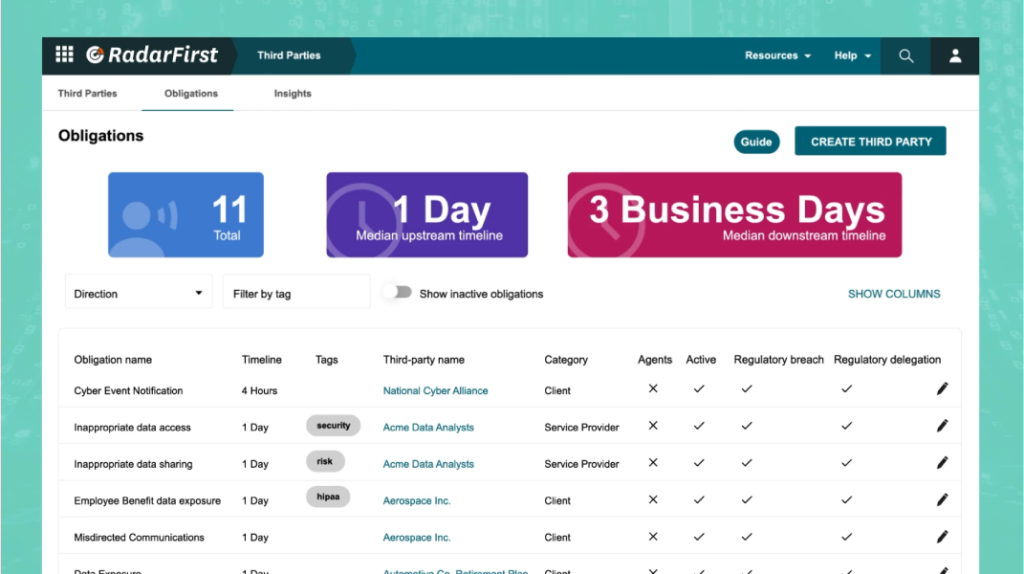
How to Manage and Mitigate Third-Party Risk

Why is Third-Party Risk Management (TPRM) Important?
Modern organizations may have hundreds, if not thousands, of third-party relationships. Without the help of automation, it would be nearly impossible to manage and mitigate third-party risk with service providers, vendors, supply-side partners, and demand-side partners, to name a few.
More and more organizations have come to rely on outsourcing to meet evolving business needs. The increased reliance on outsourcing, and by default the number of new third-party relationships, adds a layer of complexity to managing regulated data and navigating contractual obligations.
Each third-party relationship has specific mandates for data breaches and unique contractual notification obligations.
For organizations owning or processing regulated data, managing these third-party relationships is critical. Delays in contractual notification obligations can result in serious consequences – including fines, penalties, and termination of relationships.
RadarFirst’s intelligent incident management platform simplifies contractual obligations – helping you mitigate third-party risk and build customer trust.
What’s the risk posed by third-parties?
According to the most recent IBM Cost of a Data Breach Report, the most common initial attack vectors in 2022 were:
- Compromised credentials at 19% of breaches
- Phishing at 16% of breaches
- Cloud misconfiguration at 15% of breaches
- Vulnerability in third-party software at 13% of breaches
The 2021 report saw a similar order of the top four initial attack vectors. The top four costliest initial attack vectors in 2022 were:
- Phishing at USD 4.91 million
- Email compromise at USD 4.89 million
- Vulnerability in third-party software at USD 4.55 million
- Compromised credentials at USD 4.50 million
Vulnerability in third-party software had the fourth highest mean time to identify and contain a breach, with an average that was above the overall average — 284 days versus 277 days.
Watch how the Third-Party Notification Module works in RadarFirst.
Watch VideoOne Intelligent Solution to Manage and Mitigate Third-Party Risk
Within the patented Third-Party Notification Module in RadarFirst, your team can efficiently manage contractual notification obligations for both upstream and downstream relationships.
RadarFirst establishes a process for managing and gaining insights about which of your downstream entities pose a high risk to your organization and how well they comply with their notification obligations.
For managing notification obligations to your clients, RadarFirst seamlessly identifies relevant incidents and provides guidance when client data and contractual notification requirements are involved.
For tracking downstream notification obligations, RadarFirst establishes a process for managing and gaining insights about which of your downstream entities pose a high risk to your organization and how well they comply with their notification obligations.
With the Third-Party Notification Module in RadarFirst, your team is able to:
→ Manage contractual notification obligations with clients or upstream entities (who you must notify)
→ Monitor compliance by downstream entities (who must notify you)
→ Assess the risk associated with an incident, and determine whether one or multiple clients must be notified using the RadarFirst Breach Guidance Engine™
→ Capture critical contractual notification details for each external entity, including multiple notification timelines and contacts
→ Simplify tracking of notification due dates and proof of compliance with contractual obligations
→ Allow downstream entities to act as an agent of your organization, to more accurately specify the correct incident discovery date
→ Track if downstream entities remain compliant with contracts, so your organization can mitigate third-party risk
